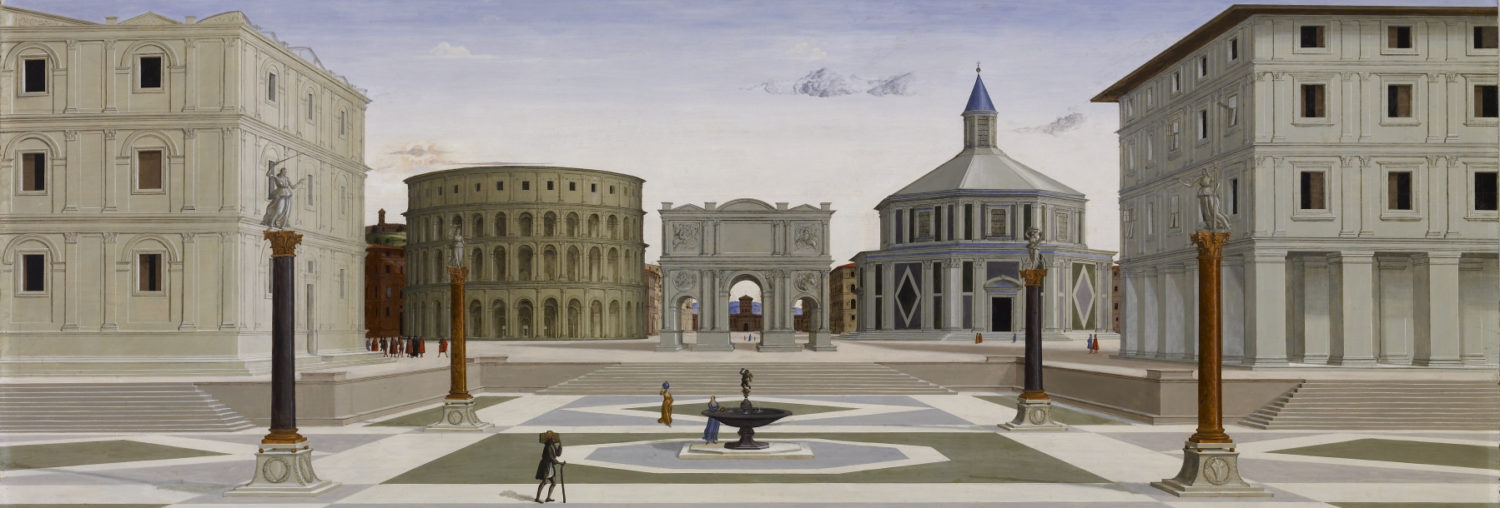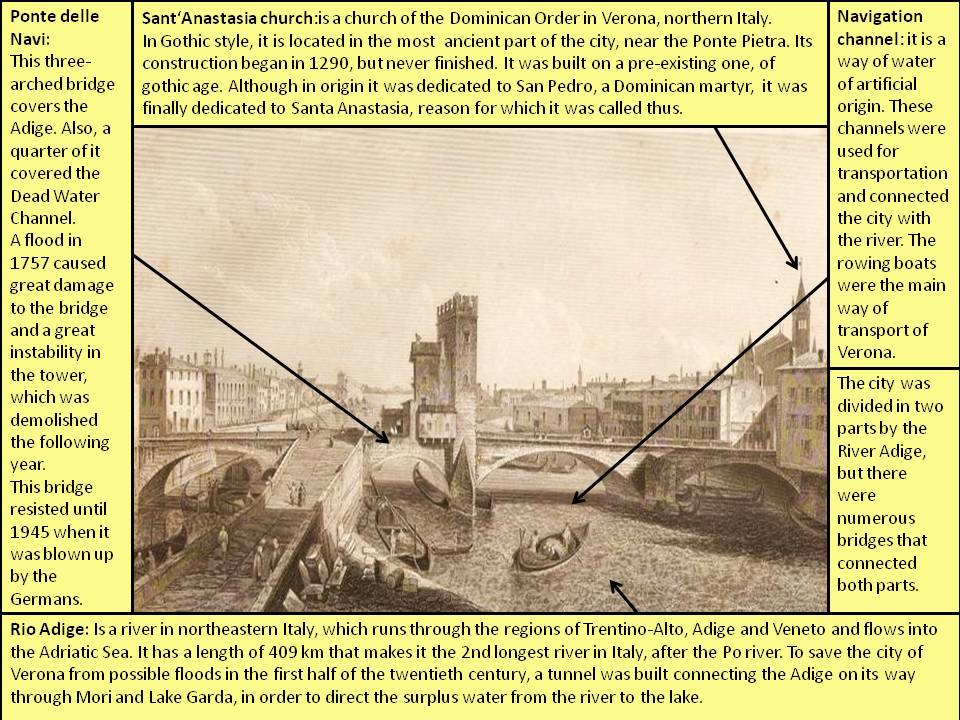This engraving, made in 1852 by A. H. Payne, shows the city of Verona in the 19th century. In the image we appreciate some buildings of the city of Verona, the Ponte delle Navi, which crossed the navigation channel of the river Adige and some rowboats. At the bottom right we can also see the church of Santa Anastasia.
Verona is a city located in Northern Italy and is the capital of the province of the same name, one of the seven ones in the Veneto region. The city is situated at the foot of the Lessini Mountains on the River Adige. It is surrounded by hills and trapped by a meander of the river Adige, about 30 kilometres east of Lake Garda. Its origin is very old, probably inhabited from the prehistoric times by a population which is difficult to be identified: they could be the Etruscans or the Paleovenetos. From that date, all the towns that alternated in the control of the zone, always did it by the presence of River Adige, that was considered like the best place for a settlement. Thus, Verona is an important geographical node. It has always been the nodal point of all the terrestrial and aquatic transport systems in Northwest Italy. In Roman times it was a meeting point for four consular routes: the Gallica road, the Via Augusta, the Vicum Veronensium and the via Postumia.
Regarding its urban structure and architecture, Verona is an outstanding example of a town that has developed progressively and uninterruptedly over 2,000 years, incorporating artistic elements of the highest quality from each succeeding period. It represents an «outstanding example of a military fortress», emphasizing that it has preserved a remarkable number of monuments of Antiquity, Medieval and Renaissance periods. The walls surrounding the city prevented the 19th century development such as industry and railroads within the historic city. As a result of this, the urban structure shows an exceptional coherence and a large degree of homogeneity. The original Roman urban form continues to be evident in the existing street pattern and the city historic fabric remained intact until World War II. Surviving evidence of the fortified town, such as Roman gates and Renaissance bastions, reflect this long military history.
It is still possible to distinguish the medieval city centre, even though it contains more recent buildings (from the Renaissance and the eighteenth and nineteenth centuries), the Veronetta and San Zeno Districts, entirely composed of buildings from the low medieval period. On the other hand, some areas outside the walls are characterized by villas and buildings constructed in the Baroque era. Finally, there is an industrial area named Borgo Roma, built in the turn of the last century, and the modern city, which developed without effecting this urban structure inherited from previous periods.
Among the most important urban elements that we can find in the image we can highlight the Ponte delle Navi that appears in the centre of the engraving. This bridge of three arches covers the river Adige and possessed a fourth lower arch that covered the canale dell’Acqua Morta. This bridge was damaged and rebuilt several times due to the floods of the river Adige and the bombs dropped by the Germans in World War II. The bridge, with its three arches, covers 90 meters, and has a width of approximately 12 meters. Another very important element that we find is the river Adige that runs through the regions of Trentino-Alto Adige and Veneto and flows into the Adriatic Sea. It has a length of 409 km that make it the 2nd longest river in Italy. To save the city of Verona from possible floods, in the first half of the twentieth century a tunnel was built connecting the Adige on its way through Mori and Lake Garda, in order to direct the surplus water from the river to the lake. The last of the most important elements that appear in the photo is the church of Santa Anastasia, which is a temple of Gothic style and is located in the historical centre of the city, near the river Adige. Its construction began in 1290, but never finished. It is thought that the project was carried out by Fra ‘Benvenuto da Bologna and Fra’ Nicola da Imola, but no documents have been found to confirm this. The church of Santa Anastasia was built on a pre-existing one dedicated to the same female saint, reason for which it was called thus, although in origin it was dedicated to San Pietro, a Dominican martyr assassinated 4 of April of 1252. The consecration Of the church took place only in the year 1471.
In the Renaissance the city was part of the Republic of Venice, sharing its splendour in art and social life. The great families of the nobility and the new mercantile bourgeoisie enrich the city with gardens, buildings, villas and churches, promoting economic, social and artistic development. With the fall of the Republic of Venice and the arrival of Napoleon, Verona and its territory become strategic points in the international scene and in the scene of numerous battles. During the first half of the 19th century, Verona formed a military stronghold of the Austrian empire, and in 1866 it became an Italian city.
Miguel Martín-Gil

